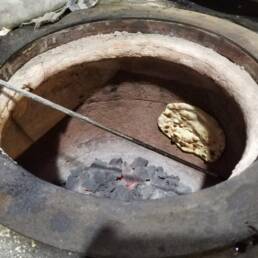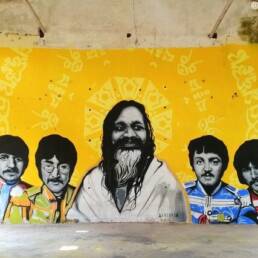In the 1970s, when the Naxal movement raged on in Bengal, a legendary telescope in a neighboring Calcutta school was hurriedly smuggled out to a safe haven, moments before the building was attacked by a group of militant Naxalites. But, who do you think it belongs to?
In 1986, an effort to retrieve the telescope was started for public viewing, as all eyes were on the highly anticipated return of Halley’s Comet which passes by Earth every 75-79 years and is the only one visible to the naked eye twice in a single human lifetime.
Halley’s last visit was in 1986, and it’s set to make a grand appearance once more in 2061. Each time it comes around, it brings with it a captivating tale. Before 1986, we saw it in 1910 where an enchanting story unfurled in a quaint village near Jessore, undivided Bengal.
When the word of Halley’s comet reached Bengal in 1909, Rai Bahadur Jadunath Majumder, a respected figure in Jessore, sparked a fervor in the hearts of townspeople, stoking their excitement for the forthcoming spectacle. A solitary man there also was waiting for the event.
He was a coin-tester at the local collectorate office who, despite failing matriculation exam not once, not twice, but thrice, had a unique passion for the enigmatic night sky. He lacked proper education, yet his fascination with the stars set him apart from the rest.
Meet Radha Gobinda Chandra from a humble village near Jessore. His curiosity about the night sky was sparked by a compelling essay in his school textbook by the famous Bengali writer, Akshay Kumar Dutta. A history was in the making.
Stargazers who own top-of-the-line telescopes would know how hard it is to locate celestial bodies even with all the latest gizmos. Now, picture this: over a century ago, in a remote village in undivided Bengal during the colonial Raj, things were way more challenging.
But in Baghchar history was about to be made. That’s where Radha Gobinda Chandra, a local lad, without any fancy equipment, armed with nothing but a humble binocular and a stack of local magazines, embarked on a journey of astronomical discovery.
Chandra was eager to uncover the estimated whereabouts and timing of the upcoming comet. With the intel, Chandra became the very first to catch a glimpse of the magnificent 1P/Halley’s comet from the exotic lands of India in April, 1910, aided only by his trusted binoculars.
With his coin-tester job which would pay him a meager amount, in 1912, he managed to buy a 3 inch lens telescope from London for £13. His passion for variable stars drove him to spend countless hours observing and ultimately amassing 37,215 reports. An unparalleled feat.
His revolutionary work caught the eye of the prestigious American Association of Variable Star Observers (AAVSO). They were so blown away by his astronomical prowess despite the primitive setup in rural Bengal, that they honored him with a membership in their exclusive ranks.
And as if that weren’t enough, they even went ahead and bestowed upon him a sleek 6.25-inch reflector telescope! It was a game-changing moment for Chandra, propelling him even further into the dazzling world of stargazing.
While he handed over the AAVSO telescope to MK Vainu Bappu, in his last days, Chandra generously donated his prized possession, the groundbreaking 3-inch-lens telescope that he bought from London, to a nearby school. This wasn’t just any old telescope, mind you.
This humble marvel of technology had transformed the way amateur astronomers looked at the skies over Bengal and India, more than a century ago. So, when the Naxalites stormed the school, they protected Chandra’s telescope at all costs.
Sources:
- Sudhindra Nath Biswas, Utpal Mukhopadhyay & Saibal Ray, Village Astronomer: Life and Works of R. G. Chandra, https://arxiv.org/pdf/1102.2383.pdf?fbclid=IwAR3HFRwkHYalLV7baYxbqgfQX70LWiJJpuoMEeCdXAm3Mnl05R2YeQpWi6c
- Kochhar, Rajesh & Narlikar, Jayant, Astronomy in India: A Perspective, Indian National Science Academy. https://rajeshkochhar.com/data/publications/historicalperspective.pdf
- Amalendu Bandyopadhyay and Ranatosh Chakraborty, Radha Gobinda Chandra – A Pioneer in Astronomical Observations in India, Indian Journal of History of Science.
Image attributes:
- Thomas R. Williams, Michael Saladyga, Advancing Variable Star Astronomy: The Centennial History of the American Association of Variable Star Observers, Cambridge University Press
- Harvard College Observatory, Halley in April 1910, public domain from Wikimedia Commons.




